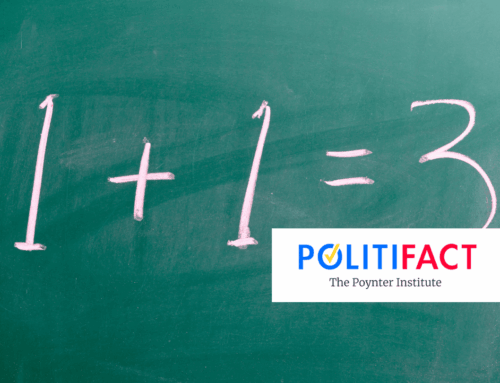Enactment of the Fiscal Responsibility Act of 2023 averted an immediate crisis over defaulting on our nation’s debt. To get our fiscal house in order, however, will require lawmakers to make much harder decisions. Even with this agreement annual deficits are projected to exceed $1 trillion and rise to more than $2 trillion by 2030. Lawmakers need to move beyond using debt as a partisan cudgel and tackle the true drivers of our nation’s debt addiction.
Fiscal Responsibility Act of 2023 – Both a big deal and a mere blip
H.R. 3746 is the most consequential legislation enacted by the 118th Congress to date and will impact spending debates for years to come. The most fiscally notable points of the legislation:
- Creates enforceable caps on discretionary spending in FY2024 and FY2025. Caps are $1.59 trillion in FY2024 ($886 billion for Defense and $704 billion for Non-Defense) and $1.606 trillion in FY2025 ($895 billion Defense and $711 billion non-Defense). These caps are enforced through sequestration—a budget process that requires across-the-board reductions in certain accounts if the annual cap is exceeded.
- Establishes annual caps on discretionary spending for fiscal years 2026-2029. These caps are not subject to sequestration but can be enforced through Congress’s annual budget process.
- Rescinds unobligated COVID-19 funds from more than 110 different line-items in past spending bills.
- Expands work requirements as a condition of eligibility in the most expensive nutrition program Supplemental Nutrition Assistance Program (SNAP) and cash assistance program Temporary Assistance for Needy Families (TANF).
- Rescinds a portion of funds the Inflation Reduction Act directed to the IRS.
The Congressional Budget Office (CBO), the official arbiter of the costs of legislation projects the bill will reduce federal spending by $1.527 trillion over the 2024-2033 fiscal years.
While $1.527 trillion is real money, it may be less impactful than it appears. CBO’s most recent budget and economic outlook, published in May, projected a total of $80 trillion in spending through 2033, resulting in $20.3 trillion in additional debt. H.R. 3746 would thus reduce future deficits by 7.5 percent.
Reining in Deficits is Difficult
Even the deficit reduction projected from the debt limit deal may not come to pass. There are multiple reasons the deficit reduction promises may fall short.
Spending caps are only as good as the congress that enforces (or ignores) them
There is nothing to keep future Congresses from adjusting the spending caps. The Budget Control Act of 2011 contained sequestration-enforceable caps for 10 fiscal years. After the first year, lawmakers repeatedly adopted measures to “adjust” the caps upward. These measures typically contained budgetary language to cover immediately increased discretionary spending with promises to cut (sequester) mandatory funds in future years.
Billions of dollars in spending will be done in discretionary accounts exempt from the caps
Lawmakers routinely spend funds in accounts that are not subject to budgetary caps. Examples include spending designated an “emergency” in response to natural disasters, COVID-19 measures, or unanticipated military actions overseas. As the COVID-19 experience alone shows, these unbudgeted “emergency” accounts can be very costly (COVID response bills totaled more than $4 trillion dollars). And in some cases this “emergency” spending is entirely predictable and is little more than a dodge to evade the caps.
CBO cannot predict the economic and fiscal future
CBO scores are not predictions but estimates. They are based on numerous assumptions regarding future interest rates, economic conditions, and revenue. They are also conducted assuming current law as a baseline, meaning tax cuts set to expire actually expire, existing programs are not expanded (or eliminated) and most “emergency” spending is not anticipated.
The Fiscal Responsibility Act of 2023 ignores the biggest future drivers of deficits
The debt limit compromise puts the onus on spending reductions almost exclusively on non-Defense discretionary spending. In FY2023 these accounts represented 15 percent of total federal spending. The bill does not address the looming fiscal insolvency of major entitlement programs, like Social Security and Medicare, which annually spend $1.35 trillion and $819 billion respectively. Furthermore, by looking only at spending, the bill ignores the other side of the ledger – revenue.
What Congress Needs to Do Next
Getting the nation’s fiscal house in order isn’t calling for a cut of some arbitrary level of spending or refusing to authorize an increase in the debt limit. Instead, it is to lay out the policy prescriptions that will be necessary, make a case for them to the American people, hash them out through a public debate, and enact the changes into law. It’s not easy, but it’s the job every lawmaker volunteered for when they ran for office.
- Address structural challenges in the biggest future drivers of spending growth – Entitlements.
- Create a simpler, fairer Tax Code that generates more revenue to reduce deficits.
- Ensure national security spending is fiscally responsible and prioritized.
- Better budget for emergencies and address long-term liabilities like climate change.










